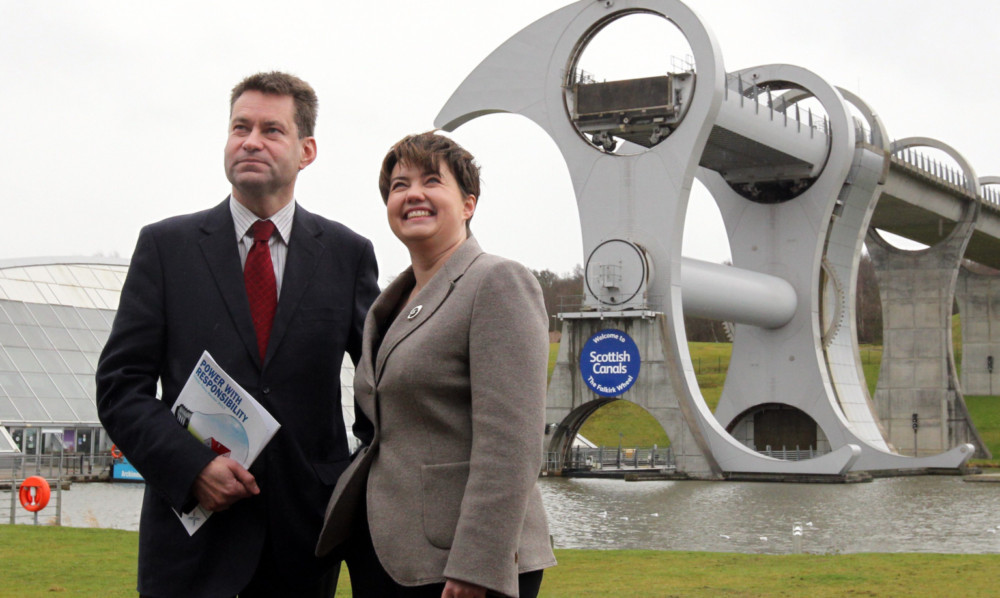
Whenever there is a poll about the Scottish Parliament, there is always a small number of Scots who say it should be abolished altogether.
While support for more powers usually runs at around 70%, and more than 90% are happy to see the Parliament continue, there’s a steady 5 or 6% who would like to see the place scrapped and believe it’s a waste of money.
It’s a fair bet that nearly all of that 5 or 6% are Conservative supporters, who didn’t want to see devolution from Westminster in the first place.
And, when you consider that current Conservative support among Scots voters is running at around 12%, you can see that about half of all Tory voters in Scotland would happily see Holyrood’s doors close for good.
That fact alone makes the recent speech by Scottish Conservative leader Ruth Davidson all the more remarkable, if not politically suicidal.
She was elected leader a year and a half ago, in a hard-fought contest against Murdo Fraser, who stood on a policy of a new name for the party and more powers for Holyrood.
Ms Davidson, by contrast, declared that the Calman proposals to be introduced to the Scottish Parliament were “a line in the sand”, and that no more powers should be ceded to Holyrood.
That appeared to placate the “anti-Holyrood” brigade in the party and she won the election.
It was a leap of faith for the Conservatives Ms Davidson is young, female and openly gay, who lists one of her hobbies as kickboxing.
She is also very able, bright and personable.
But last week, in a keynote speech, she announced that Lord Strathclyde would conduct a review of party policy, aided by former Scottish leader Annabel Goldie and former Presiding Officer Alex Fergusson, into what more powers should be granted to Holyrood, if Scots vote no to independence.
In other words, she was moving on to the ground on which Mr Fraser had campaigned for the leadership, and, at the same time, probably alienating the majority of those who voted for her.
Mr Fraser was quick to react to the U-turn by Ms Davidson, tweeting, “text for today: Luke 15 v 7.”
And, for those not up on their Bible studies, that reads: “I say unto you, that likewise joy shall be in heaven over one sinner that repents, more than over 90 and nine just persons, who need no repentance.”
It was a well-aimed and effective barb, which First Minister Alex Salmond used against Ms Davidson at First Minister’s Question Time.
But the underlying problem for the Conservatives is that they now have a leader who has U-turned on the very policy that saw her elected less than two years ago.
The party was split by that election, both at its grass roots and in the Scottish Parliament, where the overwhelming majority of MSPs supported Mr Fraser’s candidacy.
Ms Davidson has worked hard to heal these wounds.
But by making last week’s speech she appears to have reopened them.
The suspicion at Holyrood over the past few days has been that she is dancing to a Westminster tune.
The last thing David Cameron wants he has claimed to be a Unionist to his fingertips is to be the Prime Minister who presides over the break-up of the Union.
Much has been made of the Conservatives’ position during the 1979 referendum, when they claimed that the proposals were not well thought-out and that if Scots voted no, then the Tories, if elected, would come back with stronger and better powers for a Scottish assembly.
The vote for an assembly was lost, the Conservatives did win the next election and precisely nothing happened.
It may be that Mr Cameron wants to see concrete proposals in place, to give Scots the assurances they need, to be confident enough to reject Mr Salmond’s independence plans.
Whatever the reasons behind last week’s speech, the result is that the Scots Tories are in turmoil right now, with grassroots members in the dark about where the leadership really stands on one of the party’s touchstone issues.

Enjoy the convenience of having The Sunday Post delivered as a digital ePaper straight to your smartphone, tablet or computer.
Subscribe for only £5.49 a month and enjoy all the benefits of the printed paper as a digital replica.
Subscribe